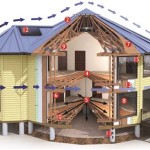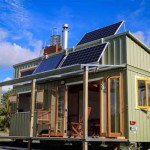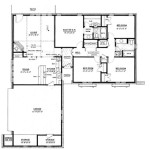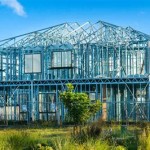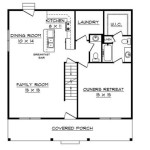A hip roof is a type of roof where all four sides slope downwards to meet the walls, forming a hip at each corner. Unlike a gable roof, which has two triangular sides and two trapezoidal sides, a hip roof has four triangular sides.
Hip roofs are often used in areas with high winds or snow loads, as they are more stable and durable than other types of roofs. They can also add a touch of elegance and sophistication to a home.
In the following sections, we will explore the different types of hip roofs, their advantages and disadvantages, and how to choose the right hip roof for your home.
Here are 8 important points about house plans with hip roofs:
- Hip roofs are more stable and durable than other types of roofs.
- Hip roofs can add a touch of elegance and sophistication to a home.
- Hip roofs are often used in areas with high winds or snow loads.
- Hip roofs can be more expensive to build than other types of roofs.
- Hip roofs can be difficult to ventilate properly.
- Hip roofs can be difficult to access for maintenance and repairs.
- Hip roofs can reduce the amount of natural light that enters a home.
- Hip roofs can make a home appear smaller than it actually is.
Overall, hip roofs are a good choice for homes in areas with high winds or snow loads. However, they can be more expensive to build and maintain than other types of roofs.
Hip roofs are more stable and durable than other types of roofs.
Hip roofs are more stable and durable than other types of roofs because they have four slopes that meet at a central point, forming a pyramid shape. This shape distributes the weight of the roof evenly and makes it less likely to collapse in high winds or under heavy snow loads.
- Hip roofs are less likely to leak. The four slopes of a hip roof meet at a central point, which means that there are no valleys or other areas where water can pool and leak into the home.
- Hip roofs are more resistant to wind damage. The pyramid shape of a hip roof makes it less likely to be damaged by high winds. The wind flows over the roof and around the corners, rather than pushing against a flat surface.
- Hip roofs are more resistant to snow damage. The four slopes of a hip roof help to shed snow evenly. This prevents snow from building up and putting too much weight on the roof.
- Hip roofs are less likely to be damaged by hail. The pyramid shape of a hip roof helps to deflect hail away from the home.
Overall, hip roofs are a good choice for homes in areas with high winds, snow, or hail. They are more stable and durable than other types of roofs, and they are less likely to leak or be damaged.
Hip roofs can add a touch of elegance and sophistication to a home.
Hip roofs are often seen on more traditional and upscale homes. They can add a touch of elegance and sophistication to any home, regardless of its architectural style. Here are a few reasons why:
- Hip roofs have a classic and timeless look. Hip roofs have been used for centuries, and they continue to be popular today. Their classic design adds a sense of permanence and stability to any home.
- Hip roofs can be customized to fit any home. Hip roofs can be built with different slopes and pitches to create a variety of looks. This makes them a good choice for homes of all sizes and styles.
- Hip roofs can add value to your home. A well-built hip roof can increase the value of your home. This is because hip roofs are seen as a sign of quality and craftsmanship.
- Hip roofs can improve the curb appeal of your home. A hip roof can make your home stand out from the rest of the homes on your street. This can be especially important if you are trying to sell your home.
Overall, hip roofs are a good choice for homeowners who want to add a touch of elegance and sophistication to their home. They are classic, timeless, and can be customized to fit any home.
Hip roofs are often used in areas with high winds or snow loads.
Hip roofs are often used in areas with high winds or snow loads because they are more stable and durable than other types of roofs.
- Hip roofs are more resistant to wind damage. The pyramid shape of a hip roof makes it less likely to be damaged by high winds. The wind flows over the roof and around the corners, rather than pushing against a flat surface.
- Hip roofs are more resistant to snow damage. The four slopes of a hip roof help to shed snow evenly. This prevents snow from building up and putting too much weight on the roof.
- Hip roofs are less likely to leak. The four slopes of a hip roof meet at a central point, which means that there are no valleys or other areas where water can pool and leak into the home.
- Hip roofs are less likely to collapse. The four slopes of a hip roof distribute the weight of the roof evenly, which makes it less likely to collapse in high winds or under heavy snow loads.
Overall, hip roofs are a good choice for homes in areas with high winds or snow loads. They are more stable and durable than other types of roofs, and they are less likely to leak or collapse.
Hip roofs can be more expensive to build than other types of roofs.
Hip roofs can be more expensive to build than other types of roofs because they require more materials and labor. Here are a few reasons why:
- Hip roofs have more rafters. Hip roofs have four slopes, which means that they require more rafters than a gable roof or a shed roof. Rafters are the structural members that support the roof deck and the roofing materials.
- Hip roofs have more complex framing. The framing of a hip roof is more complex than the framing of a gable roof or a shed roof. This is because the rafters must be cut and assembled in a way that creates a pyramid shape.
- Hip roofs require more roofing materials. Hip roofs have four slopes, which means that they require more roofing materials than a gable roof or a shed roof.
- Hip roofs require more labor to install. Hip roofs are more difficult to install than gable roofs or shed roofs. This is because the rafters must be cut and assembled with precision.
Overall, hip roofs are more expensive to build than other types of roofs because they require more materials and labor. However, they are also more stable and durable, and they can add a touch of elegance and sophistication to a home.
Hip roofs can be difficult to ventilate properly.
Hip roofs can be difficult to ventilate properly because they have no gables or other openings to allow air to flow in and out. This can lead to a build-up of moisture in the attic, which can cause problems such as mold and mildew. There are a few things that can be done to improve ventilation in a hip roof, such as installing vents in the roof deck or soffits, or using a ridge vent.
One of the most common problems with hip roofs is that they can trap moisture in the attic. This can happen when the roof is not properly ventilated, or when the insulation is not properly installed. Moisture in the attic can lead to a number of problems, including mold and mildew growth, wood rot, and structural damage. In some cases, it can even cause the roof to collapse.
There are a few things that can be done to improve ventilation in a hip roof. One option is to install vents in the roof deck. These vents allow air to flow in and out of the attic, which helps to prevent moisture from building up. Another option is to install vents in the soffits. Soffit vents are located on the underside of the roof overhang, and they allow air to flow into the attic from the outside. Finally, a ridge vent can be installed along the peak of the roof. Ridge vents allow air to flow out of the attic, which helps to create a balanced airflow system.
If you are having problems with ventilation in your hip roof, it is important to contact a qualified roofing contractor. They can assess the problem and recommend the best solution for your home.
Hip roofs can be difficult to access for maintenance and repairs.
Hip roofs can be difficult to access for maintenance and repairs because they do not have any gables or other openings that allow for easy access to the roof deck. This can make it difficult to inspect the roof for damage, clean the gutters, or make repairs. In some cases, it may be necessary to use a ladder or scaffolding to access the roof, which can be dangerous and time-consuming.
- Inspecting the roof for damage can be difficult. Without gables or other openings, it can be difficult to get a good view of the roof deck to inspect it for damage. This can make it difficult to identify problems early on, which can lead to more serious damage down the road.
- Cleaning the gutters can be difficult. Gutters on hip roofs can be difficult to reach, especially if they are located on the back side of the house. This can make it difficult to clean the gutters regularly, which can lead to clogs and water damage.
- Making repairs can be difficult. If repairs are needed on a hip roof, it can be difficult to access the damaged area. This can make it difficult to make the repairs properly, which can lead to further damage.
- Using a ladder or scaffolding can be dangerous. If a ladder or scaffolding is needed to access the roof, it is important to use caution. Ladders and scaffolding can be unstable, and falling from a height can be serious or even fatal.
Overall, hip roofs can be difficult to access for maintenance and repairs. This can make it difficult to keep the roof in good condition, which can lead to more serious problems down the road.
Hip roofs can reduce the amount of natural light that enters a home.
Hip roofs have four slopes that meet at a central point, which means that they have fewer windows than other types of roofs. This can reduce the amount of natural light that enters a home, especially on the upper floors.
- Fewer windows. Hip roofs have fewer windows than other types of roofs, such as gable roofs or shed roofs. This is because the slopes of a hip roof meet at a central point, which leaves less space for windows.
- Smaller windows. The windows on a hip roof are often smaller than the windows on other types of roofs. This is because the slopes of a hip roof are shorter than the slopes of a gable roof or a shed roof.
- Less direct sunlight. The windows on a hip roof are often facing north or south, which means that they receive less direct sunlight than windows on other types of roofs. This is because the sun is higher in the sky during the middle of the day, when the sun is shining directly on the east and west sides of a building.
- Darker rooms. The combination of fewer windows, smaller windows, and less direct sunlight can make the rooms in a home with a hip roof darker than the rooms in a home with a gable roof or a shed roof.
If you are considering a hip roof for your home, it is important to be aware of the potential impact on natural light. You may want to consider adding skylights or solar tubes to supplement the natural light that enters through the windows.
Hip roofs can make a home appear smaller than it actually is.
Hip roofs have four slopes that meet at a central point, which makes them appear more compact than other types of roofs. This can be a desirable feature for some homeowners, as it can make a home look more cozy and inviting. However, it is important to be aware that hip roofs can also make a home appear smaller than it actually is.
There are a few reasons why hip roofs can make a home appear smaller. First, the four slopes of a hip roof create a more visually complex roofline. This can make the home appear more cluttered and busy, which can make it look smaller. Second, the lack of gables on a hip roof can make the home appear shorter. This is because gables add height to a home, and without them, the home can appear squat and boxy.
In addition, the color of the roof can also affect how large or small a home appears. Darker roofs tend to make a home appear smaller, while lighter roofs tend to make a home appear larger. This is because dark colors absorb more light, while lighter colors reflect more light. As a result, a home with a dark hip roof may appear smaller than a home with a light hip roof, even if the two homes are the same size.
Overall, hip roofs can make a home appear smaller than it actually is. This is due to the visually complex roofline, the lack of gables, and the color of the roof. If you are considering a hip roof for your home, it is important to be aware of the potential impact on the overall appearance of your home.










Related Posts

